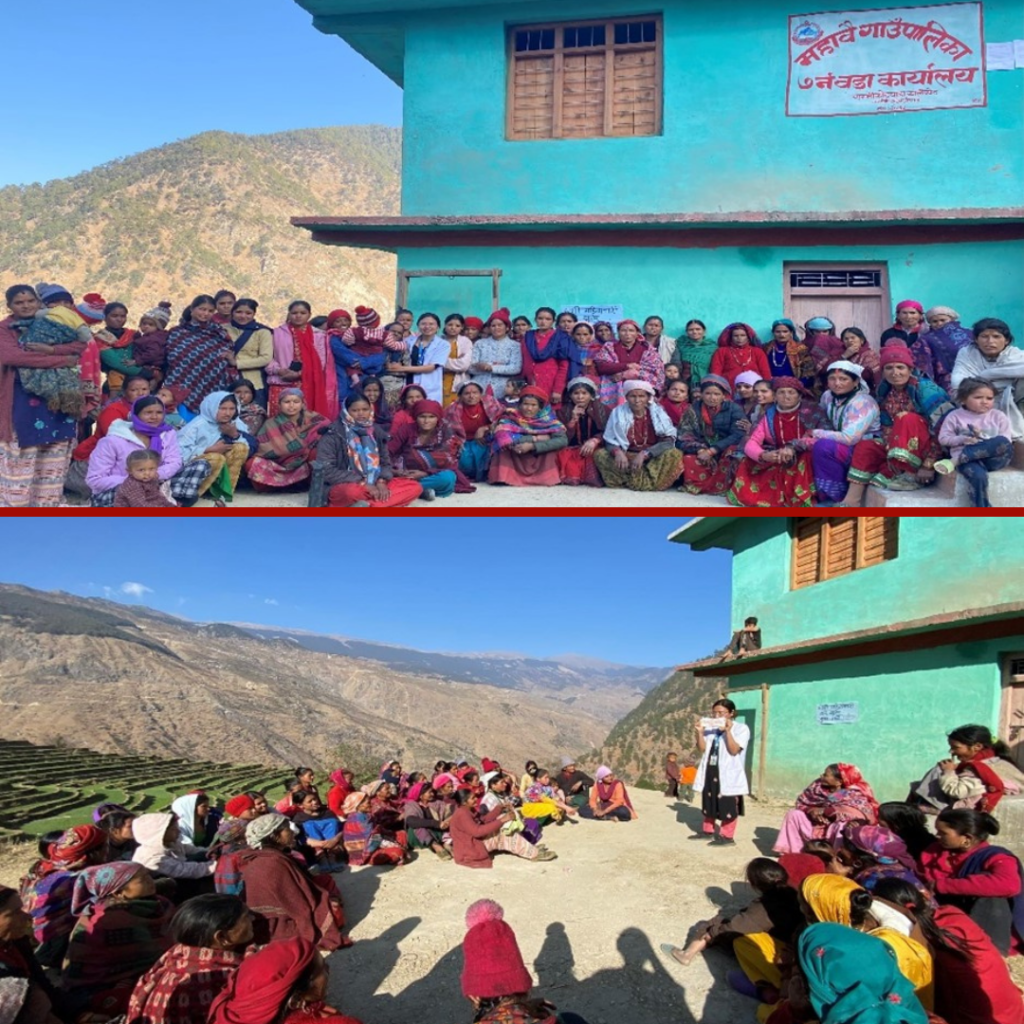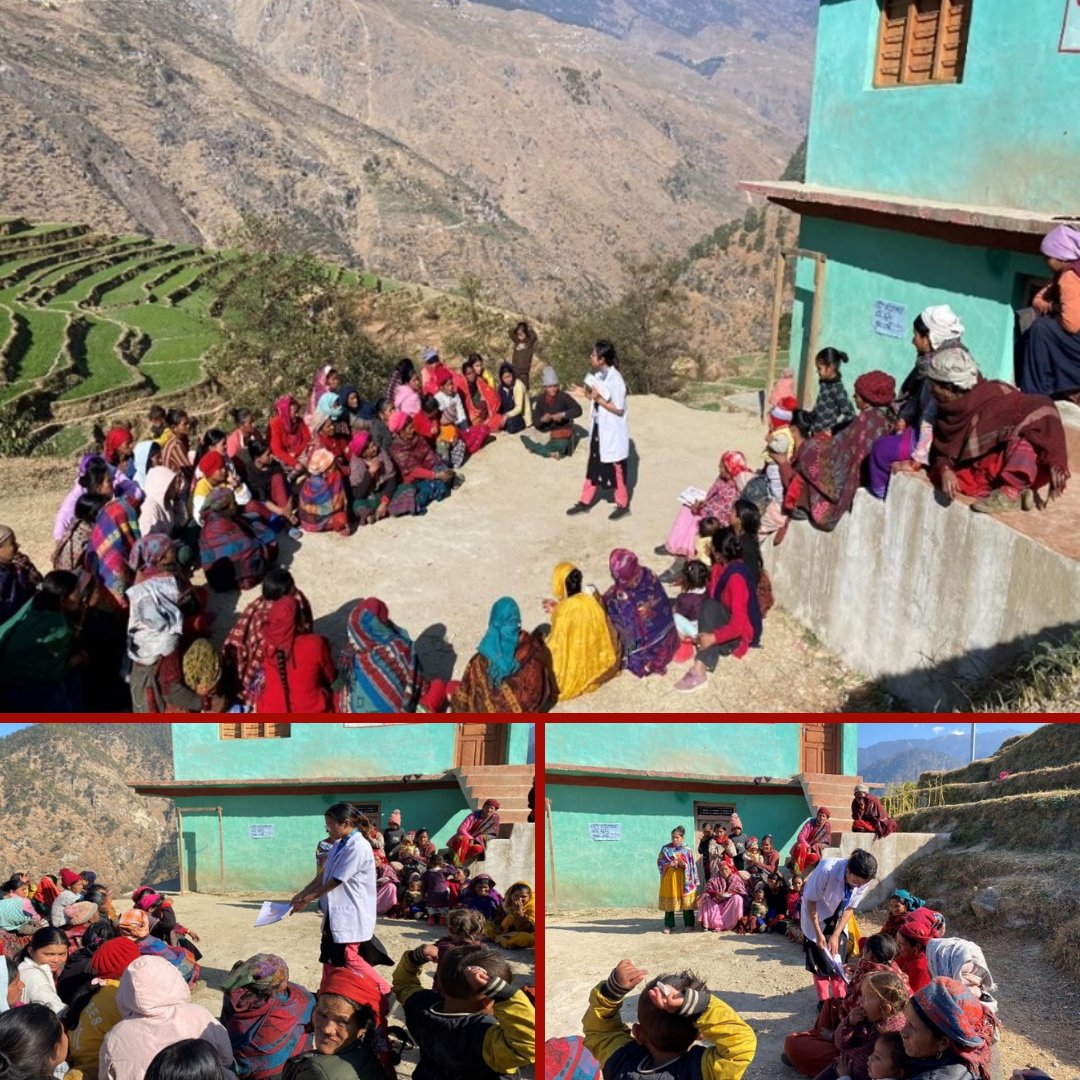Nurse Yuna Reports on Menstrual Health Awareness Project
Report on Community Education and Awareness about Menstrual Hygiene
By Yuna Shahi
Date: 11th January, 2024
I am pleased to provide this report on the activities I have undertaken to educate the community on the significance of menstrual hygiene in Mahawai, Kalikot District. I organized a community workshop on 6th January, 2024. It took more than 1 hour to reach in that community by foot and 56 participants were involved. Menstrual hygiene is a crucial for women’s health, and fostering awareness within the communities is essential for overall well-being. This report details a community education and awareness initiative focused on menstrual hygiene, outlining objectives, strategies, outcomes and community response.
Objectives:
- Raise Public Awareness:
Increase awareness within the community about the significance of maintaining proper menstrual hygiene for the health and well-being of women and girls.
- Empower through Education:
Empower women and girls by providing comprehensive information about menstrual health, dispelling misconceptions, and promoting positive attitudes towards menstruation.
Strategies:
- Community workshops:
Conduct interactive workshops within the community, providing platform for the open discussion, questions, and practical demonstration of proper menstrual hygiene practices.
- Distribution of Educational Materials:
Disseminate informative pamphlets, and posters containing visual aids and key messages to reinforce awareness and serve as ongoing references.
- Engagement with Local Leaders:
Collaborate with local community leaders, influencers, and healthcare professionals to enhance the credibility and promote the awareness campaign.
Implementation:
- Interactive Demonstrations:
Organize a demonstration to illustrate proper menstrual hygiene practices, emphasizing the correct use of menstrual products.
- Cultural Sensitivity:
Utilize a local language and incorporate cultural perspectives to make the information more relatable.
- Inclusive Approach:
Implement an inclusive approach involving men, women, and adolescents, and promoting a understanding of menstrual health.
- Feedback and Continuous Improvement:
Encourage feedback from community members throughout the awareness campaign to make necessary adjustments, ensuring the program remains effective and relevant.
Outcomes:
- Increased Awareness:
The health teaching initiative resulted in increased awareness within the community about the importance of proper menstrual hygiene practices and the biological aspects of menstruation.
- Open Discussions:
Facilitating open discussions led to a more supportive community environment where individuals felt comfortable sharing experiences and seeking guidance.
- Improved Access to Products:
Increased awareness translated into improved access to menstrual hygiene products, with more community members making informed choices about products they use.
- Impact on Mental and Physical Health:
Recognized the emotional and psychological aspects of menstruation, focused on promoting positive attitudes, and mental well-being among individuals and provided information about coping mechanism and medical interventions for menstrual pain.
- Empowerment of Women and Girls:
Women and girls reported feeling more empowered and confident about their menstrual health, demonstrating increased self-esteem, and a willingness to openly discuss the topic.
Conclusion:
The community education and awareness initiative on menstrual hygiene successfully achieved its objectives by raising awareness, dispelling myths, promoting access to resources, and empowering women and girls. And, I found mostly women used cloth pads also known as reusable cloth menstrual pads during menstruation.
I would like to express my gratitude to Oda Foundation Nepal and DFN for their support in carrying out this important work. I remain committed to continuing these efforts and ensuring that the community’s awareness and understanding of menstrual hygiene outcomes to grow.



